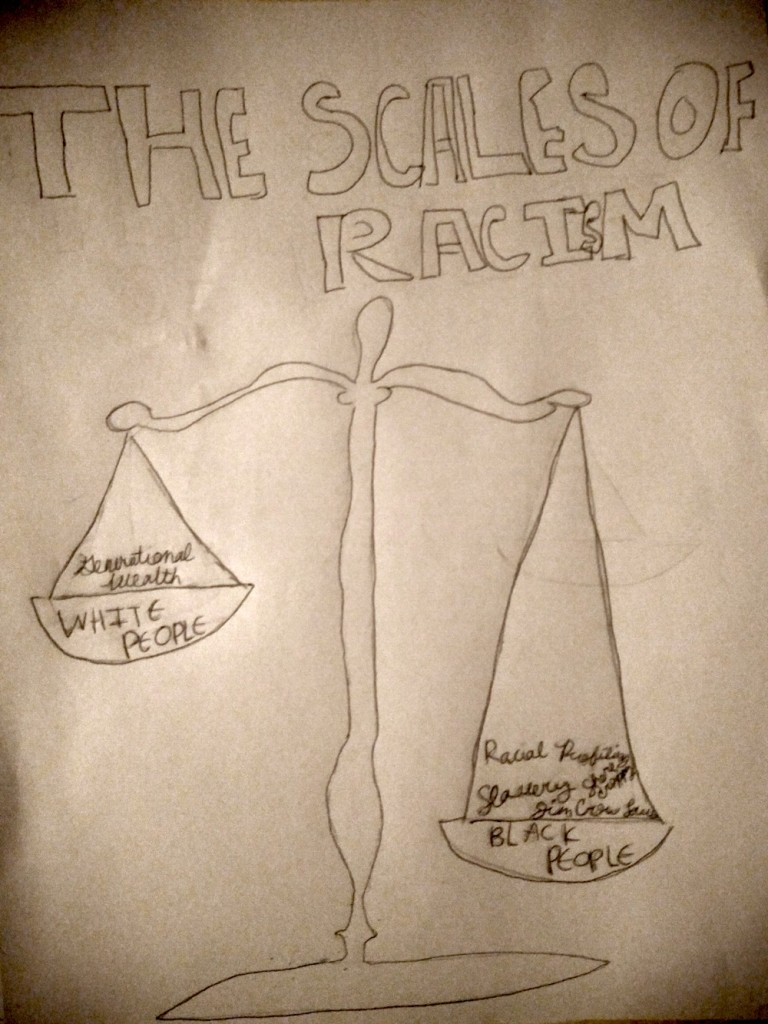“No response? No Facebook posts? No petitions? No rallies? Not even a mention … hypocrites all of you. A white innocent mentally challenged man gets tortured for 24-48 hours, but I guess that because he’s white, he doesn’t get any mention from any of you!
“I wonder what would happen if the reverse happened. Say…4 pro trump white teenagers kidnapped a mentally challenged black teen and tortured him for 24-48 hours. I bet that would be world news for at least a year. But since it was a white victim … not that bad apparently. Just not favorable. Wow … a bunch of disgusting hypocrites you are. At least none of you defended those animals or god help me…” -a friend
On Jan. 4, a boy just barely 18 was kidnapped by four individuals he’d considered his friends. They kept him bound in the corner of their SUV and tortured him for more than a day. They duct-taped his mouth. They punched him in the stomach. They stomped on his skull. They dragged a knife along his scalp, and meanwhile they uploaded excerpts of the horror on Facebook Live for the world to see. They “want[ed] it to go viral” they claimed. The perpetrators had a message to share and cried in their manic rage, “F-ck Donald Trump!” and “F-ck White People!” The teen being beaten was mentally disabled and white. Those beating him, one of whom was a college classmate, were black.
The next day, Jan. 5, I learned of this event in Chicago by group chat. My mom had just picked me up from the train station, and I reconnected my phone’s data — just to be flooded with GroupMe alerts in the chat most recently named “The Imperialist Inquisition.”
Two white friends since freshman year inquired why we, their black friends, were not more enraged. They were confounded that the nation was not marching following this tragedy, as people had when black men were killed, and they cited us as part of the problem, as hypocrites.
Four black attackers had violated a white boy and were so proud as to post a video on Facebook Live. Immediately after voicing their frustration, my two white friends left the group chat, but before leaving confided that they had felt out of place among our more liberal friends, both black and white, for a long time. Our insufficient response they considered confirmation of their suspicions, a sort of “racism, but in reverse.”

That got me thinking about racism and what it would look like in reverse, if that is even is possible. Merriam Webster defines racism as “prejudice, discrimination, or antagonism directed against someone of a difference race based on the belief that one’s own race is superior.”
Any person is capable of antagonism or prejudice (dislike or hostility based in preconceptions), but racism differentiates itself from vitriol or dislike with the element of “superiority.”
Intertwined with racism is enforced hierarchy. A person mentally catalogues themselves as superior to the race they consider lesser. These beliefs are fed from long-standing history between the two racial parties (oppressor and oppressed), and this complex history empowers the oppressor to cause concrete consequences for their “lesser.” In America, due to centuries of slavery followed by sharecropping and Jim Crow laws, that spot at the top of the pyramid and has been reserved for whites.

It is systematic discrimination that causes heightened incarceration rates for minorities, heightened poverty levels for minorities, and dismissal based on their “ethnic” names rather than their credentials. Be named Joe, not José: It makes a world of difference. According to the U.S. Census Bureau, though 70 percent of the country is caucasian, black males make up 40 percent of the prison population and whites 39 percent, as of 2010. And while 25 percent of black people live below the poverty line, only 11.6 percent of whites had incomes below the poverty level, as of 2011. Data helps us see big picture consequences, but each data point is an illustration of a single interaction between historically oppressed and oppressor that contribute to these large figures.
It manifests in disparate prison sentencing for blacks and whites, in the job denied a black person of greater accreditation and instead gifted a white, in the black person pulled over for a tail light and killed rather than waved on with a warning, as happened in the case of Philando Castile last summer.
In the case of the young disabled man from Chicago, racism is not the culprit because there is no power structure enabling the perpetrators of this act. The attackers just were violent and hateful. So they are charged with hate crimes. The system in this case, came to the defense of the victim, rather than align itself with the perpetrator. The outcry of the Black Lives Movement is for when the latter develops because systems, no matter how old, must be held accountable for their crimes, and racial hierarchies must be undone. Yet a pyramid cannot be toppled with allegiance with the status quo. So, we march.
Jolisa is a senior at the Westminster Schools, forever feuding with ignorance both in herself and others.




